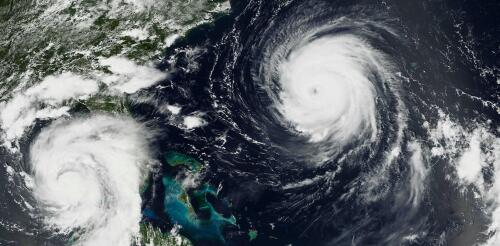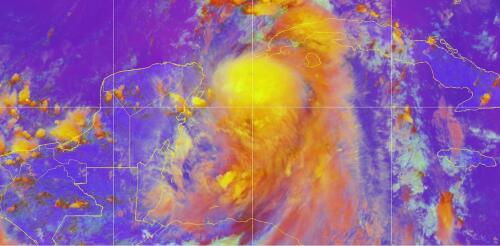Wind shear
Weather forecasters talk about wind shear a lot during hurricane season, but what exactly is it? I teach meteorology at Georgia Tech, in a part of the country that pays close attention to the Atlantic hurricane season. Here’s a quick look at one of the key forces that can determine whether a storm will become a destructive hurricane. What is wind shear? Wind shear is defined as the change in wind speed, wind direction, or both, over some distance. You may have heard airplane pilots talk about turbulence and warn passengers that they’re in for a bumpy ride. They’re typically seeing signs of sudden changes in wind speed or wind direction directly ahead, and wind shear can sometimes cause this. With hurricanes, the focus is usually on vertical wind shear, or how wind changes in speed and direction with height. The effects of wind shear when wind speed increases with height (left) or changes direction (right)....
Forecasters expected Hurricane Idalia to intensify into a major hurricane as it headed over exceptionally warm waters in the Gulf of Mexico, on track for landfall in Florida on Wednesday, Aug. 30, 2023. Hurricane warnings were posted along a wide stretch of Florida’s Gulf coast, from near Sarasota to the Panhandle, including Tampa Bay. Hurricane scientist Haiyan Jiang of Florida International University explains how two conflicting forces – record-high ocean heat and wind shear, the latter influenced by El Niño – were determining Idalia’s future, and how they have made the 2023 hurricane season overall difficult to forecast. What role is ocean temperature playing in Idalia’s forecast? Forecasters are watching several factors, but the biggest is the very high sea surface temperature in the Gulf of Mexico. The Gulf is typically warm in late August, and we often see hurricanes this time of year. But this summer, the sea surface temperature has...
Meteorologists began warning about severe weather with the potential for tornadoes several days before storms tore across the Southeast and the Central U.S. in late March 2023. At one point, more than 28 million people were under a tornado watch. But pinpointing exactly where a tornado will touch down – like the tornadoes that hit Rolling Fork, Mississippi, on March 24, and towns in Arkansas, Illinois and multiple other states on March 31 – still relies heavily on seeing the storms developing on radar. Chris Nowotarski, an atmospheric scientist, explains why, and how forecast technology is improving. Why are tornadoes still so difficult to forecast? Meteorologists have gotten a lot better at forecasting the conditions that make tornadoes more likely. But predicting exactly which thunderstorms will produce a tornado and when is harder, and that’s where a lot of severe weather research is focused today. Often, you’ll have a line of thunderstorms in an envi...
Hurricane Ian strengthened into a major hurricane on Tuesday as it headed for Florida and was on track to bring dangerous storm surge to the coast and flooding rainfall to large parts of the state. Several areas were under evacuation orders. After a slow start to the 2022 Atlantic hurricane season, Ian formed in ideal conditions, with minimal vertical wind shear, which can tear apart a storm, and warm ocean surface waters providing fuel. Forecasters expect Ian to remain a major hurricane – meaning Category 3 or higher on the Saffir-Simpson Hurricane Wind Scale, with winds over 110 mph – as it heads for landfall in Florida, expected Wednesday. But the scale doesn’t take water risk into account, and flooding and storm surge are both major risks from Ian. Large parts of the state could see 15 inches or more of rain from Hurricane Ian. National Hurricane Center As a meteorologist livin...



